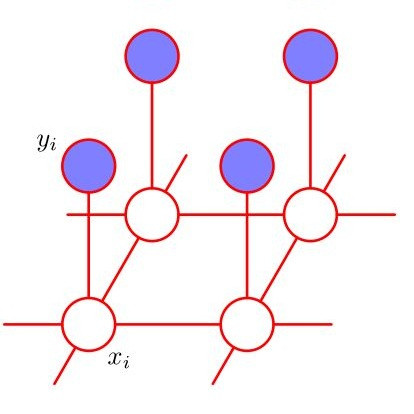We present an information-based uncertainty quantification method for general Markov Random Fields. Markov Random Fields (MRF) are structured, probabilistic graphical models over undirected graphs, and provide a fundamental unifying modeling tool for statistical mechanics, probabilistic machine learning, and artificial intelligence. Typically MRFs are complex and high-dimensional with nodes and edges (connections) built in a modular fashion from simpler, low-dimensional probabilistic models and their local connections; in turn, this modularity allows to incorporate available data to MRFs and efficiently simulate them by leveraging their graph-theoretic structure. Learning graphical models from data and/or constructing them from physical modeling and constraints necessarily involves uncertainties inherited from data, modeling choices, or numerical approximations. These uncertainties in the MRF can be manifested either in the graph structure or the probability distribution functions, and necessarily will propagate in predictions for quantities of interest. Here we quantify such uncertainties using tight, information based bounds on the predictions of quantities of interest; these bounds take advantage of the graphical structure of MRFs and are capable of handling the inherent high-dimensionality of such graphical models. We demonstrate our methods in MRFs for medical diagnostics and statistical mechanics models. In the latter, we develop uncertainty quantification bounds for finite size effects and phase diagrams, which constitute two of the typical predictions goals of statistical mechanics modeling.
翻译:我们为一般的Markov随机场提供了一种基于信息的不确定性量化方法。Markov随机场(MRF)是结构化的、概率化的图形模型,对非定向图解而言,是概率化的图形模型,为统计机械学、概率化机器学习和人工智能提供了基本的统一模型工具。典型的MRF是复杂和高维的,节点和边缘(连接)是从更简单、低维度的概率模型及其本地连接以模块化方式建立的;反过来,这种模块化允许将现有数据纳入管理成果框架,并通过利用其图形理论理论结构有效地模拟这些数据。从数据中学习图形模型模型和(或)从物理模型和制约因素中构建这些模型必然包含数据、模型选择或数字近似性的不确定性。管理成果框架中的这些不确定性既可以在图形结构结构中表现出来,也可以在对利益程度的预测中加以传播。我们在这里利用基于对数量预测的严格、信息约束来量化这些不确定性;这些界限利用了MRF的图形结构结构结构,并且能够从物理模型、建模阶段中获取固有的高度分析模型。我们为这些模型的精确度分析模型的精确度分析模型。




